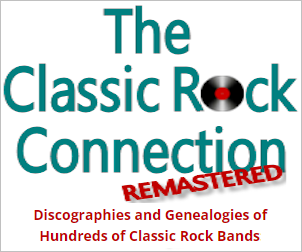Economy Brands
In addition to unmarked goods and store brands, several manufacturers produced economy brands. Using different names, limiting selection, and slightly reducing sizes allowed makers to offer pieces at a lower price point to a different consumer segment while lessening the chance of significantly diluting sales of their primary lines. Skillets were typically offered only in a small range of sizes, such as a 7, 8, and 9, and with their sidewalls a fraction of an inch shorter than normal. A #8 Victor by Griswold, for example, nests comfortably inside a #8 Griswold LBL with room to spare. Few if any items other than skillets were offered, an exception being a Victor waffle iron.
The following are the four economy brands most often seen in the vintage collectibles marketplace.
 Miami
(Favorite Stove & Range Co., Piqua, OH)
Miami
(Favorite Stove & Range Co., Piqua, OH)Produced between 1916 and 1934. Named for the native American tribe indigenous to Southwestern Ohio, the Miami. Of the four, the most ambitious in that they created a distinctive trademark logo, the word MIAMI inside a diamond outline. "Dual logo" pieces, also bearing the Favorite Piqua Ware "smiley" trademark were produced.
Produced from roughly 1890 to 1935. Source of the name is uncertain, but, although sometimes said to be inspired by early 20th century wartime patriotism, unlikely given the line's inception in the late 19th century. Made at different points in time either with just name, p/n, and size number, or with more elaborate inscriptions. Earliest examples have outside heat ring, evolving later to inset. Unusual among the economy brands in that the later, fully marked pieces include a size #5 and a #6, both highly valued as collectibles.
Using this table, the approximate time period of manufacture of a Victor skillet can be determined. Characteristics in bold represent those which are distinctive to a series and/or most prominently distinguish that series from its precursors.
Victor Timeline
| Pattern Number | Heat Ring | Additional Marks | Years Made | Sizes |
| None | Outside | No | ca.1886-1892 | #7,#8,#9 |
| Yes | Outside | No | ca.1892-1905 | #7,#8,#9 |
| Yes | Inset | No | ca.1905-1909 | #7,#8,#9 |
| Yes | Inset | "CAST IRON SKILLET" | 1910s-1920s | #7,#8,#9 |
| Yes | Inset | "Fully Marked" | 1920s-1930s | #5,#6,#7,#8,#9 |
Made 1890s to 1940s. Likely chosen as a generic, patriotic name. Different designs vary in trademark placement or add the Wagner stylized logo, but with the exception of some rarely-seen smooth bottoms, all were of outside heat ring design. Seen in bare iron and nickel plate. Online sellers occasionally erroneously claim the National brand was a predecessor of Wagner, perhaps the result of confusion with an unrelated brand of steel skillets seen marked National. There is, however, evidence to suggest the National brand was acquired by Wagner in the purchase of the Sidney Hollowware foundry.
National Timeline
| Pattern Number | Heat Ring | Additional Marks | Years Made | Sizes |
| No | Yes | No | ca.1890s-1922 | #7,#8,#9 |
| No | Yes | Dual Logo | ca.1922-1924 | #7,#8,#9 |
| Yes | Yes | Dual Logo | ca.1924-1940s | #7,#8,#9 |
| Yes | No | Dual Logo | ca.19??-1940s | #7,#8,#9 |
 Oneta (Wapak Hollow Ware Co., Wapakoneta, OH)
Oneta (Wapak Hollow Ware Co., Wapakoneta, OH)Estimated production 1912 to 1926. Amusingly, named using the remaining syllables of the name of the city of manufacture not used for the main brand. Simply marked with name in block letters and size number.
Dual Logo Pieces
Curiously, in the cases of Miami, Victor, and National, there were for a time pieces produced bearing both of the names and/or trademarks of the main brand and the economy. Had Wapak survived past 1926, they might have done the same. These are referred to as "dual logo" pieces, or, in the case of Victor, as being "fully marked".








